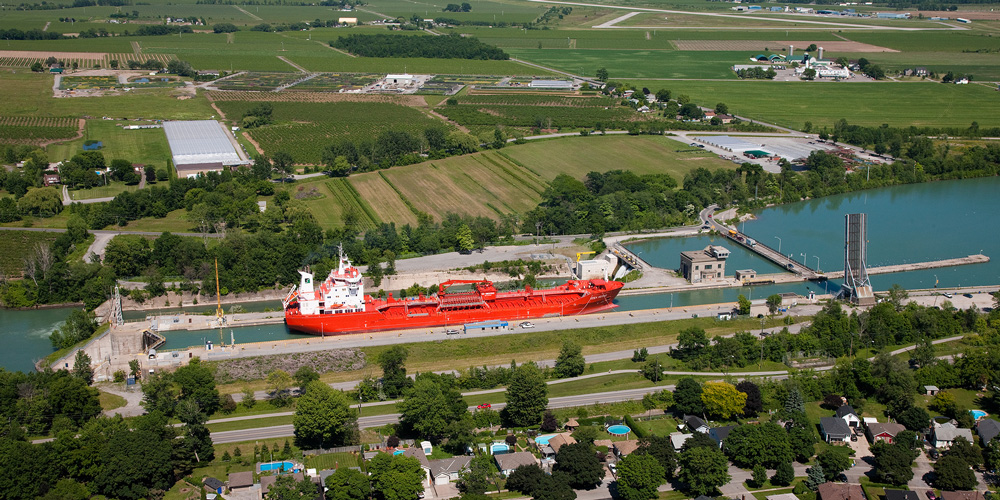St. Lawrence Seaway Improves Safety in Wake of Windoc Incident
January 9, 2003
Cornwall, January 9, 2003 – With the tabling of the Transportation Safety Board’s Report on the Windoc incident, The St. Lawrence Seaway Management Corporation (SLSMC) today provided an update on actions taken to improve waterway safety, especially at bridges. The SLSMC is involved in legal action concerning this incident and, therefore, has to limit its comments to a brief summary of the incident and actions taken in response to the Transportation Safety Board (TSB) recommendations.
In the evening of August 11th, 2001, the bulk carrier Windoc, carrying a cargo of grain, collided with Bridge 11 in the Welland Canal. While both the vessel and the bridge sustained extensive damage, there were no serious injuries or oil pollution and the Welland Canal reopened to vessel traffic within 48 hours of the incident.
The bridge was fixed in a raised position as a temporary measure. Contractors were hired immediately to repair the damaged bridge span, and the Seaway reopened the bridge to vehicular traffic on November 16, 2001.
As required by law, the Transportation Safety Board investigated the incident, and has just released its final report. The report addresses changes to minimize risks to marine, road, rail and pedestrian traffic and contains three recommendations concerning SLSMC; they relate to the supervision of bridge operators, emergency preparedness and medical fitness of employees. Prior to today’s release of the report, the TSB had issued three advisories to SLSMC allowing the Corporation to take action in all three areas before the opening of the 2002 navigation season.
To further improve its safe operation, changes in operating procedures and supervisory structure have been implemented. Additional technical safeguards in regards to the operation of bridges and other SLSMC structures are currently under study or in the process of being implemented. These technical measures include the use of cameras, sensors, and remote operations from a central control station.
In addition, an emergency planning review, which was already underway, is now completed. An annual multi-agency planning exercise will ensure an enhanced coordination of personnel and resources within the affected area in the event of an incident.
In regards to the staffing of safety-sensitive positions, the SLSMC has initiated a comprehensive review of all operations staff, including job descriptions and performance standards. This review will lead to the identification of all employees performing duties that are safety-sensitive and the updating of employee training and performance standards, coupled with an auditing program to ensure compliance.
Monitoring of the medical fitness of employees, as well as drug and alcohol testing, are complex and sensitive issues that affect human rights and continue to be debated in the courts. However, The St. Lawrence Seaway Management Corporation has been able to establish procedures, in agreement with the Canadian Auto Workers (CAW), that take into account both human rights and the guidelines set out by the courts, and meet with the approval of our unions, management and the Transportation Safety Board.
With these additional measures in place, the St. Lawrence Seaway continues to build upon its 43-year record of safe and reliable customer service through a progressive management approach. The opening of the new navigation season on March 25, 2003 will mark the mandatory introduction for all commercial vessels of Automatic Identification System (AIS). The Seaway is the first inland waterway in the world to implement this internationally recognized navigation tool, thus further enhancing marine safety and efficiency. More information on the AIS initiative within the Seaway can be found on our Web site www.greatlakes-seaway.com.






